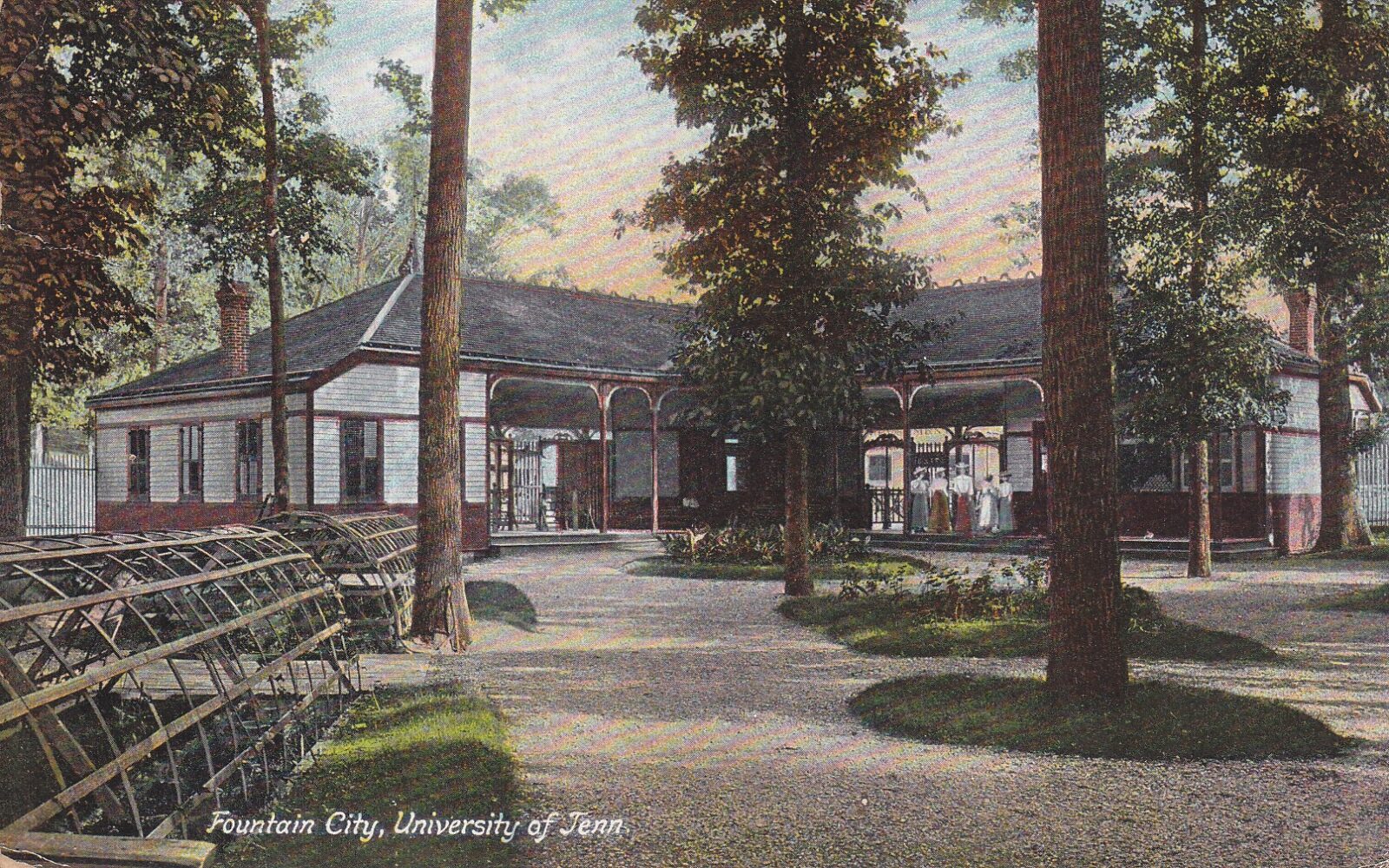The Fountain Head Railway locomotive made 20 stops along its 5.25-mile route. In service from 1890 to 1905, the railroad line originated at the Central Market Station (now called Emory Park) and ended at the corner of Broadway and Hotel Avenue which several generations of Fountain Citians have known as “The Station.”
In an amazing engineering feat for its time, the Fountain Head Railway (The Dummy Line) was constructed in just five months and carried its first passengers on May 27, 1890. The particularly amazing thing was that the standard gauge track switchbacked almost to the top of one of the highest elevations in Knox County, Scott’s Hill (also called St. Mary’s Hill), before descending into Fountain City.
The meandering route was designed to service the transportation needs of many residential neighborhoods as well as the needs of workers at such disparate locations as the textile mills east of Broadway which could be reached with only a half-mile walk, the mills on Baxter and Oklahoma Ave., the manufacturing plants along Central Avenue and even the workplaces of hundreds of railroad workers both downtown and at Coster Shops in Lonsdale. At its height the Fountain Head Railway was collecting 10,000 fares a day.
The 20 stops were somewhat evenly placed along the route which Lucy Curtis Templeton described in a Knoxville News Sentinel article on Jan. 10, 1960:
(The Train) left town from a station on the corner on North Broadway and Holston (now Tyson) Street, which runs along the northern side of Old Gray Cemetery. … After the “dummy” left the station in town it puffed along Holston Street past the National Cemetery, past the old General Hospital, then due north until it came to what is now Woodland Avenue. The area was a true woodland then; there was only one stop in the lovely grove after leaving the Foster Scotts. This stop was at the home of Mr. Eugene Mynders, about midway between the turn into Woodland and the next bend, which was on a hillside above Mucktown and below the F.A.R. Scott’s large brick residence on top of the hill where St. Mary’s Hospital now stands.
After some semi-circling south here, the “dummy line” turned north once more, ran through Lincoln Park where there was a siding used to let one train pass another. … After leaving Lincoln Park, the line took a turn to the east, ran along what is now Walker Boulevard, and crossed Broadway at Arlington where there was a station. It then resumed its course along Walker Boulevard past the brickyard and then the Apple Tree Station on the McCampbell farm.
… The line then turned north again past Whittle Springs through a pleasant meadow to Greenway, where there was another station. …From this point, the “dummy” ran along the same route followed later by the streetcars and buses. … From Greenway it was a straight shoot to Fountain Head. It was not until years later that North Broadway was extended along what had been the old “Dummy” line, although there might have been a side road there. The main highway ran to the right through Smithwood.

Fountain City Bank (Circa 1925). Founded in 1924, Fountain City Bank anchored the Mynatt Block, the former location of the Fountain Head Railway Station. Five other tenants were present on the block at the time of perhaps the largest fire in Fountain City history that destroyed the block on Nov. 13, 1941. (Photo courtesy of Chris Hoosier)
Overlooking Fountain City Park and the final station on the line stood Col. J.C. Woodward’s imposing 40-50 room Fountain Head Hotel with its surrounding resort area. A day trip to the park or the hotel was fun and this made Fountain Head a destination place long before one had recreational opportunities such as Gatlinburg and the Great Smokies or Big Ridge Park.
In 1905, the Fountain Head Railway with its steam locomotives had been replaced by more economical electrically-powered trolley cars using those same tracks. Businesses had begun to develop along Hotel Avenue and Broadway. Across the street from The Station, on the south side of the 100 block of Hotel Avenue, there was a confectionery, a restaurant, a physician’s office, a dental office, a pharmacy and a grocery.
Perhaps the zenith in the development of The Station area was reached by 1940 when, on the north side of Hotel Avenue and along Broadway, the following businesses were present in what was called the Mynatt Block: Fountain City Bank, Mynatt’s Cafe, the Fountain City Beauty Shop, Dr. T.S. Cox’s dental office, the C. LeMarr Department store and Sherman Wallace’s Fountain City Barber Shop.
On Thursday, Nov. 13, 1941, the evening paper carried this headline: “Fire Changes Busy Block to Mass of Debris.” Fountain City Bank’s president, J. Almer Tindell, and the bank cashier, Claude C. Myers, arrived home from a hunting trip to hear the news at 9:30 that morning.
Probably the fire is still the most destructive in Fountain City’s history. The Mynatt Block was in ashes. Not only the bank, but also the rest of the block was destroyed and unofficial estimates of the loss were $50,000 to 60,000, a very large sum at that time.
The conflagration had started about 2 a.m. and it was feared for a time that several other Hotel Avenue businesses would be lost. Across the street, walls were scorched and blistered and windows cracked at the Fountain City Florist, the Nell and Nell Shop, the White Store, Fountain City Furniture and the Thornton Drug Company. Even a number of trees in Fountain City Park were scorched. Only Providence and water pumped from Fountain City Lake by the fire company prevented more extensive damage.
The historic Station seemed to come to an end that day but it would be replaced by a more modern building and some new tenants as we will discuss in next month’s essay.
Sources: N.L. Hicks’s A History of Fountain City (2000), J.C. (Jim) Tumblin’s The Fountain Head Railway Company (2003), Images of America: Fountain City (2004) and Fountain City: People Who Made a Difference (2016).


